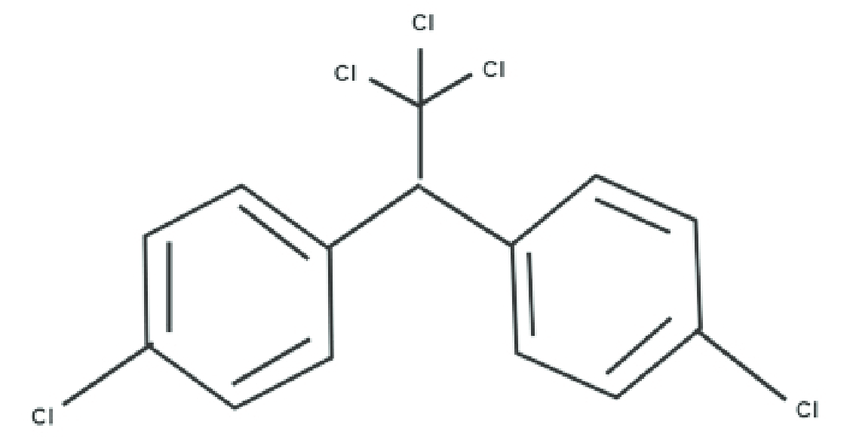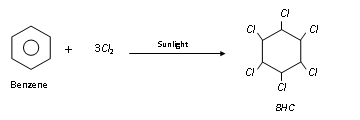
Answer
471.9k+ views
Hint: In order to answer this question we should be knowing well about DDT and BHC. Knowing the properties will help us to answer this question.
Complete step-by-step answer:
DDT or dichlorodiphenyltrichloroethane is a colorless, tasteless and almost odourless crystal and chemical compound, an organochlorine. It was originally developed as an insecticide. It became infamous for its environmental impacts.
Structure of DDT is shown below:

Benzene hexachloride or BHC has several stereoisomers of 1,2,3,4,5,6 hexachlorocyclohexane which are formed by the light induced addition of chlorine to benzene. One of these isomers is an insecticide called Lindane or Gammalene.
Structure of BHC is given below:

DDT and BHC are considered as both good insecticides since they are highly soluble in water. Therefore we can say that Option A is the correct answer.
Note: DDT is a powerful contact insecticide and is widely used for killing mosquitoes and other insects. It is still being widely used in poor countries due to the non availability of other cheaper insecticides.
DDT is banned in various parts of the world due to both concerns about harm to the environment and the potential for harm to human health, there was also evidence linking DDT with the sudden declines in bald eagle populations due to thinning egg shells.
Moving on to BHC we can say that BHC has been used both as an agricultural insecticide and as a pharmaceutical treatment for lice and scabies.
Complete step-by-step answer:
DDT or dichlorodiphenyltrichloroethane is a colorless, tasteless and almost odourless crystal and chemical compound, an organochlorine. It was originally developed as an insecticide. It became infamous for its environmental impacts.
Structure of DDT is shown below:

Benzene hexachloride or BHC has several stereoisomers of 1,2,3,4,5,6 hexachlorocyclohexane which are formed by the light induced addition of chlorine to benzene. One of these isomers is an insecticide called Lindane or Gammalene.
Structure of BHC is given below:

DDT and BHC are considered as both good insecticides since they are highly soluble in water. Therefore we can say that Option A is the correct answer.
Note: DDT is a powerful contact insecticide and is widely used for killing mosquitoes and other insects. It is still being widely used in poor countries due to the non availability of other cheaper insecticides.
DDT is banned in various parts of the world due to both concerns about harm to the environment and the potential for harm to human health, there was also evidence linking DDT with the sudden declines in bald eagle populations due to thinning egg shells.
Moving on to BHC we can say that BHC has been used both as an agricultural insecticide and as a pharmaceutical treatment for lice and scabies.
Recently Updated Pages
Who among the following was the religious guru of class 7 social science CBSE

what is the correct chronological order of the following class 10 social science CBSE

Which of the following was not the actual cause for class 10 social science CBSE

Which of the following statements is not correct A class 10 social science CBSE

Which of the following leaders was not present in the class 10 social science CBSE

Garampani Sanctuary is located at A Diphu Assam B Gangtok class 10 social science CBSE

Trending doubts
Which are the Top 10 Largest Countries of the World?

A rainbow has circular shape because A The earth is class 11 physics CBSE

Fill the blanks with the suitable prepositions 1 The class 9 english CBSE

How do you graph the function fx 4x class 9 maths CBSE

Give 10 examples for herbs , shrubs , climbers , creepers

In Indian rupees 1 trillion is equal to how many c class 8 maths CBSE

The Equation xxx + 2 is Satisfied when x is Equal to Class 10 Maths

Difference between Prokaryotic cell and Eukaryotic class 11 biology CBSE

What is BLO What is the full form of BLO class 8 social science CBSE




